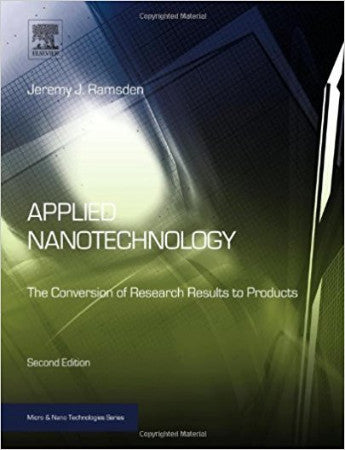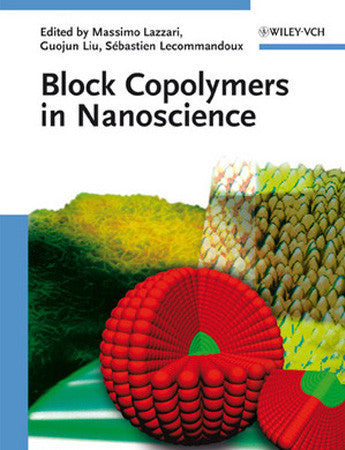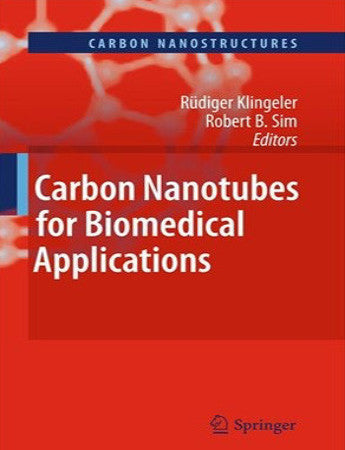Electrospun Nanofibres and Their Applications
This Update covers all aspects of electrospinning as used to produce Nanofibres. It contains an array of colour diagrams, mathematical models, equations and detailed references. It will be invaluable to anyone who is interested in using this technique and also to those interested in finding out more about the subject.
Electrospinning is the cheapest and the most straightforward way to produce nanomaterials. Electrospun Nanofibres are very important for the scientific and economic revival of developing countries. Electrospinning was developed from electrostatic spraying and now represents an attractive approach for polymer biomaterials processing, with the opportunity for control over morphology, porosity, and composition using simple equipment. Because electrospinning is one of the few techniques to prepare long fibres of nano- to micrometre diameter, great progress has been made in recent years.
It is now possible to produce a low-cost, high-value, high-strength fibre from a biodegradable and renewable waste product for easing environmental concerns. For example, electrospun nanofibres can be used in wound dressings, filtration applications, bone tissue engineering, catalyst supports, non-woven fabrics, reinforced fibres, support for enzymes, drug delivery systems, fuel cells, conducting polymers and composites, photonics, medicine, pharmacy, fibre mats serving as reinforcing component in composite systems, and fibre templates for the preparation of functional nanotubes.
Electrospinning is the cheapest and the most straightforward way to produce nanomaterials. Electrospun Nanofibres are very important for the scientific and economic revival of developing countries. Electrospinning was developed from electrostatic spraying and now represents an attractive approach for polymer biomaterials processing, with the opportunity for control over morphology, porosity, and composition using simple equipment. Because electrospinning is one of the few techniques to prepare long fibres of nano- to micrometre diameter, great progress has been made in recent years.
It is now possible to produce a low-cost, high-value, high-strength fibre from a biodegradable and renewable waste product for easing environmental concerns. For example, electrospun nanofibres can be used in wound dressings, filtration applications, bone tissue engineering, catalyst supports, non-woven fabrics, reinforced fibres, support for enzymes, drug delivery systems, fuel cells, conducting polymers and composites, photonics, medicine, pharmacy, fibre mats serving as reinforcing component in composite systems, and fibre templates for the preparation of functional nanotubes.
1. Introduction
1.1 What is nanotechnology?
1.2 What is electrospinning?
1.3 What affects electrospinning?
1.4 Applications
1.5 Global Interest in the field of Electrospinning
2. Mathematical Models for Electrospinning Process
2.1 One-dimensional Model
2.2 Spivak-Dzenis model
2.3 Wan-Guo-Pan Model
2.4 Modified One-Dimensional Model
2.5 Modified Conservation of Charge
2.6 Reneker's model
2.7 E-Infinity theory
3. Allometric Scaling in Electrospinning
3.1 Allometric Scaling in Nature
3.2 Allometrical Scaling Laws in Electrospinning
3.2.1 Relationship between radius r of jet and the axial distance z
3.2.2 Allometric scaling relationship between current and voltage
3.2.3 Allometric scaling relation between solution flow rate and current
3.2.4 Effect of concentration on electrospun polyacrylonitrile (PAN) nanofibres
3.2.5 Allometric Scaling Law between Average Polymer Molecular Weight and Electrospun Nanofibre Diameter
3.2.6 Effect of voltage on morphology and diameter of electrospun nanofibres
3.2.7 Enlarging Electrospinability by Nonionic Surfactants
3.3 Allometric Scaling Law for Static Fiction of Fibrous Materials
3.4 Allometric scaling in Biology
4. Application of Vibration Technology to Electrospinning
4.1 Effect of viscosity on diameter of electrospun fibre
4.2 Effect of Vibration on Viscosity
4.3 Application of vibration technology to polymer electrospinning
4.4 Effect of solution viscosity on mechanical characters of Electrospun Fibres
4.5 Carbon Nanotube Reinforced Polyacrylonitrile Nanofibres by Vibration-Electrospinning
5. Magneto-electrospinning: Control of the instability
5.1 Critical Length of Straight Jet in Electrospinning
5.2 Controlling Stability by Magnetic Field
5.3 Controlling Stability by Temperature
5.4 Siro-electrospinning
6. BioMimic Fabrication of Electrospun Nanofibres with High-throughput
6.1 Spider-spinning
6.2 Electrospinning of silk fibroin nanofibres
6.3 Mystery in spider-spinning process
6.4 Bubble-electrospinning
7. Controlling Numbers and Sizes of Beads in Electrospun nanofibres
7.1 Experiment Observation
7.2 Effects of different solvents
7.3 Effect of the polymer concentration
7.4 Effect of salt additive
8. Electrospun Nanoporous Microspheres for Nanotechnology
8.1 Electrospun nanoporous spheres with Chinese drug
8.2 Electrospinning-dilation
8.3 Single Nanoporous Fibre by Electrospinning
8.4 Micro sphere with nano-porosity
8.5 Micro-composite fibres by electrospinning
9. Super-carbon Nanotubes: An E-infinity Approach
9.1 E-infinity Nanotechnology
9.2 Application of E-Infinity to Electrospinning
9.3 Super-carbon Nanotubes: An E-infinity Approach
10. Mechanics in Nano-textile Science
10.1 Jet-vortex spinning and Cyclone model
10.2 Two-phase flow of Yarn Motion in High-Speed Air and Micropolar Model
10.3 Mathematical Model for Yarn motion in Tube
10.4 Nano-hydrodynamics
10.5 A New Resistance Formulation for Carbon Nanotubes and Nerve Fibres
10.6 Differential-difference Model for Nanotechnology
11. Nonlinear Dynamics in Sirofil/Sirospun Yarn Spinning
11.1 Convergent point
11.2 Linear Dynamical Model
11.3 Nonlinear Dynamical Model
11.4 Stable Working Condition for Three-strand Yarn Spinning
11.5 Nano-sirospinning
1.1 What is nanotechnology?
1.2 What is electrospinning?
1.3 What affects electrospinning?
1.4 Applications
1.5 Global Interest in the field of Electrospinning
2. Mathematical Models for Electrospinning Process
2.1 One-dimensional Model
2.2 Spivak-Dzenis model
2.3 Wan-Guo-Pan Model
2.4 Modified One-Dimensional Model
2.5 Modified Conservation of Charge
2.6 Reneker's model
2.7 E-Infinity theory
3. Allometric Scaling in Electrospinning
3.1 Allometric Scaling in Nature
3.2 Allometrical Scaling Laws in Electrospinning
3.2.1 Relationship between radius r of jet and the axial distance z
3.2.2 Allometric scaling relationship between current and voltage
3.2.3 Allometric scaling relation between solution flow rate and current
3.2.4 Effect of concentration on electrospun polyacrylonitrile (PAN) nanofibres
3.2.5 Allometric Scaling Law between Average Polymer Molecular Weight and Electrospun Nanofibre Diameter
3.2.6 Effect of voltage on morphology and diameter of electrospun nanofibres
3.2.7 Enlarging Electrospinability by Nonionic Surfactants
3.3 Allometric Scaling Law for Static Fiction of Fibrous Materials
3.4 Allometric scaling in Biology
4. Application of Vibration Technology to Electrospinning
4.1 Effect of viscosity on diameter of electrospun fibre
4.2 Effect of Vibration on Viscosity
4.3 Application of vibration technology to polymer electrospinning
4.4 Effect of solution viscosity on mechanical characters of Electrospun Fibres
4.5 Carbon Nanotube Reinforced Polyacrylonitrile Nanofibres by Vibration-Electrospinning
5. Magneto-electrospinning: Control of the instability
5.1 Critical Length of Straight Jet in Electrospinning
5.2 Controlling Stability by Magnetic Field
5.3 Controlling Stability by Temperature
5.4 Siro-electrospinning
6. BioMimic Fabrication of Electrospun Nanofibres with High-throughput
6.1 Spider-spinning
6.2 Electrospinning of silk fibroin nanofibres
6.3 Mystery in spider-spinning process
6.4 Bubble-electrospinning
7. Controlling Numbers and Sizes of Beads in Electrospun nanofibres
7.1 Experiment Observation
7.2 Effects of different solvents
7.3 Effect of the polymer concentration
7.4 Effect of salt additive
8. Electrospun Nanoporous Microspheres for Nanotechnology
8.1 Electrospun nanoporous spheres with Chinese drug
8.2 Electrospinning-dilation
8.3 Single Nanoporous Fibre by Electrospinning
8.4 Micro sphere with nano-porosity
8.5 Micro-composite fibres by electrospinning
9. Super-carbon Nanotubes: An E-infinity Approach
9.1 E-infinity Nanotechnology
9.2 Application of E-Infinity to Electrospinning
9.3 Super-carbon Nanotubes: An E-infinity Approach
10. Mechanics in Nano-textile Science
10.1 Jet-vortex spinning and Cyclone model
10.2 Two-phase flow of Yarn Motion in High-Speed Air and Micropolar Model
10.3 Mathematical Model for Yarn motion in Tube
10.4 Nano-hydrodynamics
10.5 A New Resistance Formulation for Carbon Nanotubes and Nerve Fibres
10.6 Differential-difference Model for Nanotechnology
11. Nonlinear Dynamics in Sirofil/Sirospun Yarn Spinning
11.1 Convergent point
11.2 Linear Dynamical Model
11.3 Nonlinear Dynamical Model
11.4 Stable Working Condition for Three-strand Yarn Spinning
11.5 Nano-sirospinning




